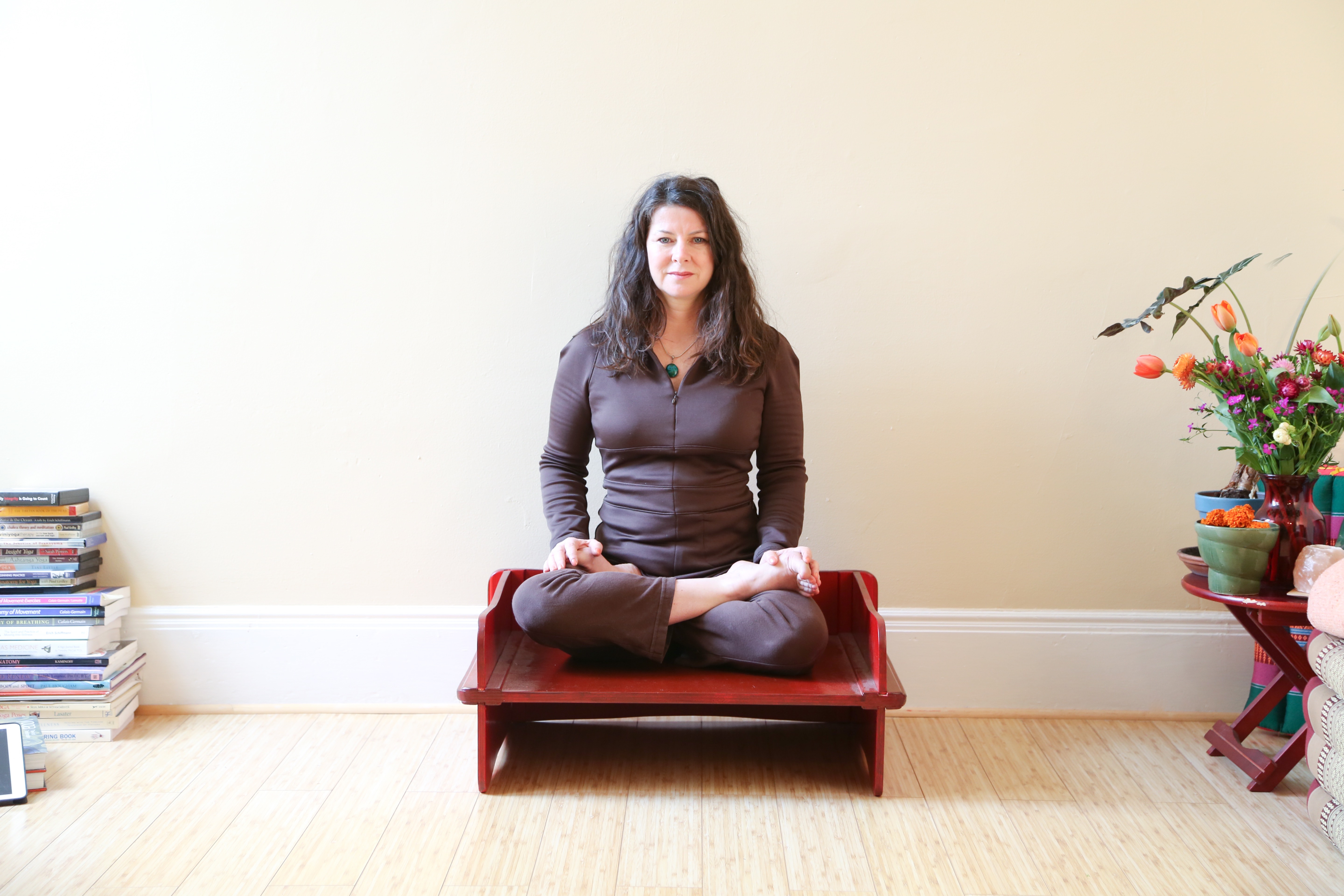 When we make a special meal, we use the best tools we have- the best pot for cooking, the best dishes for enjoying the meal. When we eat good food, we do it for the nourishment.
When we make a special meal, we use the best tools we have- the best pot for cooking, the best dishes for enjoying the meal. When we eat good food, we do it for the nourishment.
The same is true in yoga. We use our bodies as the containers for the poses- “cooking” internally as we practice. We enjoy the good feeling experienced through the poses as we practice, just as we savor the delicious flavor of good food while eating.
Ultimately, we practice poses for their residue in our lives just as we eat food for its nutritional residue.
Savasana is analogous to the final stage of cooking- walking away from the pot to let the chemical magic happen- as well as the final stage of eating- digestion!
Savasana is not Corpse Pose- or a pose at all.
Savasana is both a state of being- of quiet absorption- as well as the practice of cultivating this state of absorption.
Corpse pose (or whatever pose is serving Savasana) is the container- the pot, the plate, the spoon.
SAVASANA IS JUST AS MAGICAL AS COOKING AND AS MUCH AN ACT OF LOVE.
Beyond words, concepts and often beyond memory- the experience of Savasana is not so esoteric or mystifying despite being difficult to define. We encounter this absorption in our everyday lives.
We understand how a beautiful image or amazing event can a completely overtake us. Our breath gets quiet, slows or stops. Time does not exist. We are still. We instinctively pause because we recognize the truth in front of us. We identify with it from our gut- even if we don’t realize it at the time.
Our ego and sense of separation from the rest of the world is suspended. The moment -to- moment experience often cannot be recalled later by our more conscious mind. Savasana is the practice of this deep connection: our cells work the hardest while we are still and our mind reboots while we are quiet.
By the time we reach Savasana – on or off the mat- we usually are in need of respite. Savasana is about letting go, but also a significant time of transformation and integration. Alignment and technique are important- the attributes that make the pose/container a good one- a vessel well crafted for integration.
So, a serious practitioner of Savasana is like a gourmet or connoisseur.
Corpse Pose is one of the best poses for creating the conditions for Savasana practice. Here is a description of a well crafted Corpse, followed by modifications for specific issues.
HOW TO BECOME A CORPSE:
- To practice Savasana in Corpse, lie on your back and get as comfortable as possible. Addressing the most subtle anatomical and psychological details you can realize. Choose a quiet place, lie on a bit of padding, head supported, something firm and even under the knees such as a rolled up blanket.
- Cover yourself if you will get even slightly chilled. Lower the lights and rest into the support of the floor every time you exhale. A slight weight on the eyes such as an eye bag encourages the activation of the body’s parasympathetic relaxation response.
- There is no certain order to the alignment. Often, certain steps will need to be repeated in order to get the whole body ready for release. Re-do any alignment that continues to be a distraction.
- If practicing at home, experiment. Get creative. Find what works. Also. keep in mind things change moment to moment.
- Avoid getting attached to any detail or way of practicing. There will likely be a time when something new is called for. Stay open in order to avoid the potential agitation caused by an old pattern that suddenly stops working for you. Acceptance of change is way more difficult once we are in the throes of aversion.
Feet parallel. Shoulder blades and buttocks smoothed downward towards the back of the knees.
Lift one heel from the floor, flex the foot with a straight knee. Release to floor turning the foot inward slightly- “pigeon toed.” Once the foot rests on the floor, let it relax completely. It will very likely turn towards outward again, but less than before.
Then adjust the other leg and foot the same way.
Spread your arms out equidistant from the torso. Draw your shoulders down- away from the ears. Then, roll your arms out, adjusting your hands so that your index finger knuckle rests on the floor.
If this arm rotation doesn’t feel comfortable because of your own individual anatomy, then allow the arm to rest at any rotation that is non- distracting to you.
If you are very over stimulated and/or outwardly focused, roll your palms face down towards the earth and let them soften.
Lift the head. Lengthen the back of your neck to be long and soft so that your chin is released toward your chest. Soften the area of the forehead between the eyebrows. Open the jaw a little and part the lips. Allow your tongue to widen and lay on the floor of the mouth.
Allow the eyeballs and contents of the skull- including the brain- to feel as if they are getting smaller and are forever falling backwards away from the front of the skull and that the back of the skull is getting warmer and softening.
Do the sides of the body feel in balance? Yes? Find the breath. Wait for it to come to you rather than reaching out and dragging it to you. Breathe naturally, allowing the breath to be as slow as it wants.
Allow the physical adjustments to soothe the breath and find it’s own rhythm, texture, pace and tone.
Allow the “witness” to arise, the part of the self that is intimately aware of everything that happens but does not interfere or judge. At first the witness is in its most conscious state of awareness.
Do nothing except witness.
Allow your awareness to make a natural and familiar progression into it’s deeper layers. You will sink into your inner world and connect to the creativity at work inside you- beyond words, judgments and concepts. Free but rooted along with everything that is able to renew itself. You might not be able to recall the experience later.
REBIRTH- WELCOME BACK!!
When you are ready to come out of Savasana, begin by retuning to a more conscious awareness of your inner world- alignment, energy, and movement of mind and feelings. Allow the mind to remain open and restful while verifying the actual experience.
Watch the experience inside as you wiggle your toes, and slowly introduce movement. Allow the breath rhythm to remain natural but slow and fine. On an exhale, gently press your lower back towards the floor as you bend your knees toward your chest. Remain tension free and aware of all sensation within all layers of self in every moment. Pause if you become distracted or disconnected. Then simply reconnect and continue.
Roll to your side on the inhale. Pause for at least one exhale. Feel the connection again. Keeping the eyes closed can be helpful. Witness the changes in the body/mind all the way to sitting upright.
Take at least a few breaths in the upright position. Feel how you are in one single tone, like a single musical note. Know that when you open your eyes, nothing has to change and when you leave the mat you are merely leaving your laboratory study or your dress rehearsal. Ordinary life is the actual forum where yoga unfolds.
The mind will again begin to dominate your overall experience. Let this process be gradual, fluid. Notice if you start to “spin off” in the mind by introducing stressful or disharmonious thinking and feeling.
Be in a hurry and uber-efficient if you must. Life often requires vigilance.
Be a warrior without taking on stress, contracting and hardening. The brain wants to coexist in a healthy harmony with the body and feelings. But like every other part of our body, it needs to operate within a system of checks and balances.
Develop a practice of “checking in” from time to time. At first, this might have to be every few seconds or minutes. At first, you might forget to check in at all. When you do remember, just take a moment to conjure the feeling of the end of Savasana.
Eventually, we can click into this feeling with ease- even in more stressful times—– or so I have been told!
Namaste.
MODIFICATIONS AND VARIATIONS OF CORPSE POSE:
Lower back pain- depending on what type of pain and exact location of the pain; combine as needed:
1. a rolled blanket under the lumbar curve of the lower back; experiment with thickness and firmness of the roll.
2. support under knees, experiment with thickness and firmness
3. support under feet
4. bending the knees wide, feet together (like supta baddha konasana) or feet flat on floor wide, bending knees fallen together
5. angling torso up at a diagonal, as with a firmly rolled blanket and firm pillow underneath for support
6. lying on side of body, support under sidewaist and under head; both supports should be thickness required to allow spine to be straight, fluid line.
Pregnancy-
in last phases- #5 or 6 above
for dizzyness- #5 or 6 above
for swollen ankles- 2 or 3
to relieve pain from weight of belly- 1, 5 or 6
Anxiety- 5 or 6
Falling asleep in Savasana (not the goal!)- 5 (Frequent occurrence – sleep more!!)
For refreshment- rolled blanket under heart and/ or lower back, knees and feet
Rest is considered a luxury in our society but we all know that it is basic- almost as important as breathing in the cultivation of lifeforce. We can live longer without rest than without breath, but only with a decrease in quality.
Even if you don’t have time for a nap, you can pause and sense into the mind body world. Take some time every day this summer to discover something about yourself that requires pause and reflection to find.
Love————->
~tina
______________________

